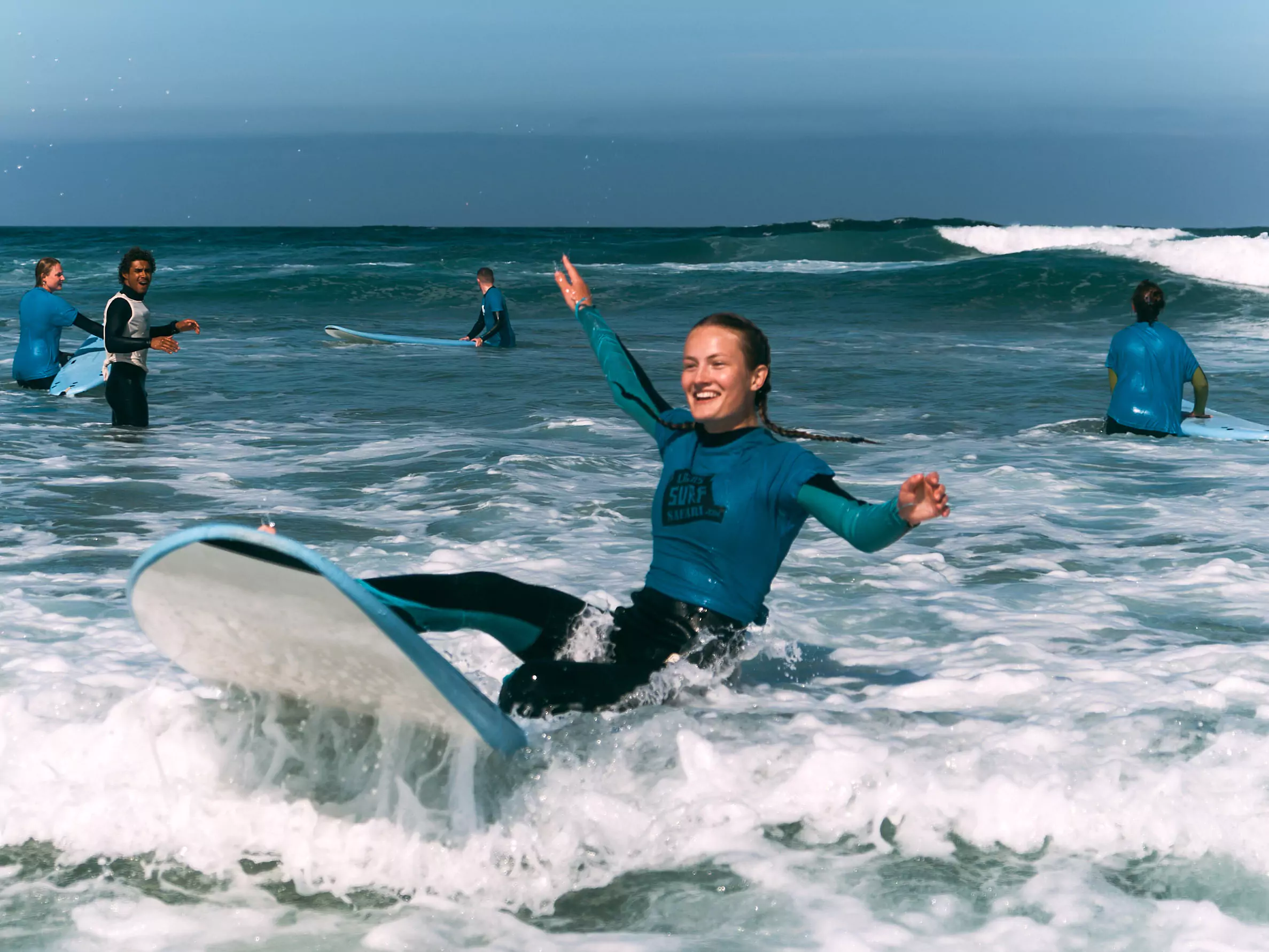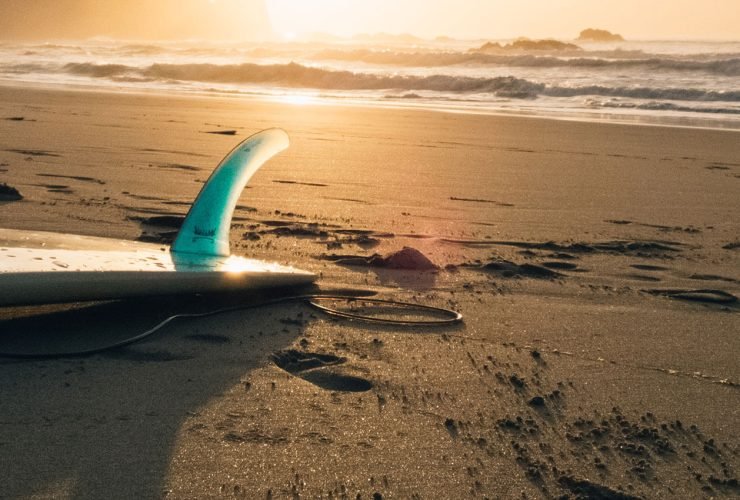1- You Have to Put the Hardwork
As with all new sports, they take time to master.Surfing is no different. In fact, learning to surf is one of the hardest and more complicated sports you could master.Surfing requires the use of a wide range of movements. Some of these movements can feel awkward and unnatural to your body.
Take the pop up for example…When would you perform the pop-up movement in your day to day life? Probably, never. Therefore don’t be too hard on yourself. You are going to need to familiarize yourself with a new range of movements, a moving board, the ocean, and a very steep learning curve.
All of these factors take time.Surfing is difficult but this is why it’s so much fun!


2 - Everybody Has a Different Learning Curve
In your first couple of session learning to surf, you will see a quicker rate of progression.Usually in the first 6 months of surfing regularly.After this time period, your progress slows down.This is often where most people learning to surf either give up or need some form of guidance/ help.
Most sports keep you hooked and engaged longer because your rate of progress is quicker. Surfing is an exception.A constant moving environment, unfamiliar movements and a very slow learning rate it’s of little wonder why learning to surf is so god damm hard!
3- The Board is Very Important
The single most overlooked factor of learning to surf.Think about it for a second…What areas of your surfing do you have control over?Not many. But you can control what board you choose. Right now you could change what equipment your riding and see a MASSIVE difference in your surfing progress.
Most surfers are on the wrong board. For two reasons:
- Most surfers think they are better than they are.
- People hate taking advice.
The good news is there’s a mathematical equation which determines the correct board size without your ego getting in the way.Let’s break it down a little…To catch more waves you need momentum. Having the correct volume makes it easier to paddle.The buoyancy of the board on top of the water helps the board to move at the same speed as the oncoming wave.
Once you have caught the wave the same buoyancy helps to stabilize the board giving you more time to assist with your pop up.
Volume = Surfing success.
Don’t try and be cool and walk around with a smaller board. Change your board and you will change your surfing.Buying the right board for your weight, ability & preference is key to advancing your surfing and move forward in your progression.
4- Reading the Sea takes Time!
Waves are created by strong winds from storm systems out at sea. These waves travel hundreds of miles to reach your beach.As the waves hit the shallow ledge of the beach they pitch and break. Understanding where the waves are pitching will help you identify the take off spot.
On point breaks, it’s easier to identify the take-off spot and consequently, they attract thicker crowds.Furthermore, beginner surfers struggle to understand the correct angle on takeoff, as a result, they don’t catch many waves. More on that later…
Hence the reason why learning to surf is best at a beach break.Most people learning to surf fail to observe the beach conditions before entering the water. Taking a few minutes before each surf helps to identify some important factors.
What are you looking for?
- The rhythm of the sets? E.g Are the sets breaking every 5 minutes? or every 4 minutes?
- Where are the waves pitching?
- Find a landmark that lines up with your take off spot
- Which wave in the set is best? 1,2,3 etc
- Are the waves dumping, surging or spilling over?
- Are these conditions safe for learning to surf?
Take note of the best surfers and watch what they are doing.Begin the process now and you will notice a big difference in the months that follow.
Practicing in your environment is the best way to learn how to read the waves.Never underestimate the first-hand experience.




